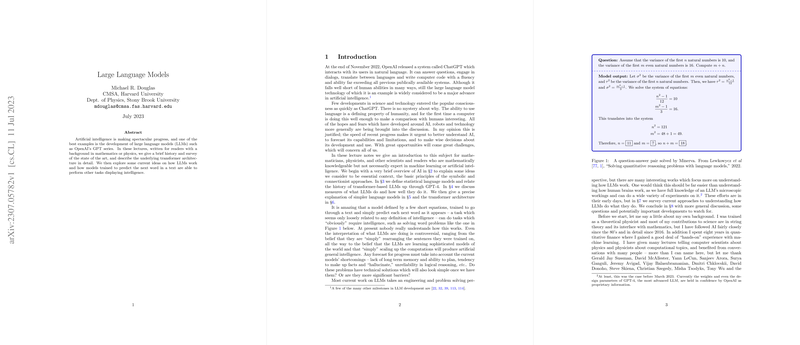Understanding LLMs: A Comprehensive Overview
Introduction to LLMs
LLMs like GPT-4 represent significant advancements in the field of artificial intelligence, particularly in natural language processing. Their ability to generate human-like text, understand context, and solve complex problems marks a major leap forward. This overview explores the intricacies of LLMs, focusing on their architecture, training procedures, current capabilities, and theoretical underpinnings.
Transformer Architecture
At the heart of the most advanced LLMs is the transformer architecture. This model eschews traditional sequential processing in favor of parallelizable attention mechanisms, allowing LLMs to efficiently handle long-range dependencies in text. A transformer model alternates between layers of multi-head self-attention and position-wise fully connected feed-forward networks. The incorporation of positional embeddings enables the model to maintain the order of words, a key aspect of understanding language. This architecture is pivotal for the scalability and effectiveness of LLMs.
Training Process and Hyperparameters
LLMs undergo extensive training on vast corpora, such as the entirety of the internet. The training employs a generative pre-training objective, where the model learns to predict the next word in a sequence given the preceding words. Hyperparameters for state-of-the-art models, such as GPT-3, include embedding dimensions, the number of layers, window size, and several others detailed specifically for GPT-3's architecture. The learning involves optimizing a cross-entropy loss function using gradient descent, with specific attention to regularization and learning rate adjustments to prevent overfitting and ensure efficient training.
Capabilities and Limitations
LLMs demonstrate remarkable linguistic capabilities, including text generation, question-answering, translation, and even coding. However, they are not without limitations. These models often struggle with tasks requiring deep logical reasoning, planning, or a comprehensive understanding of the world. Furthermore, LLMs can "hallucinate" or generate inaccurate information, posing challenges for reliability and trustworthiness.
Theoretical Insights and Understanding LLMs
Understanding why LLMs work so well is an ongoing effort within the research community. Investigations into the internal mechanics of LLMs reveal that they may learn and internally represent complex linguistic structures, such as parse trees, through their embeddings and attention mechanisms. Moreover, studying LLMs through the lens of computational complexity theory provides insights into the types of problems LLMs can efficiently solve.
Future Directions and Speculations
The field of LLMs is ripe with questions and potential developments. Addressing limitations in planning, confidence in outputs, and reflection - the model's ability to understand and reason about its processing and outputs - are key areas of future research. Enhancing LLMs' understanding and generation capabilities might involve integrating mechanisms for more explicit logical reasoning and world modeling, possibly drawing from advances in other areas of AI and cognitive science.
Conclusion
LLMs represent a significant advancement in artificial intelligence, with the potential to transform how machines understand and generate human language. While their current capabilities are impressive, understanding their inner workings and addressing their limitations remain crucial areas of ongoing research. The exploration into the core functionalities, theoretical foundations, and future enhancement strategies for LLMs opens up exciting avenues for advancements in natural language understanding and beyond.
